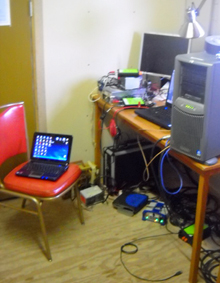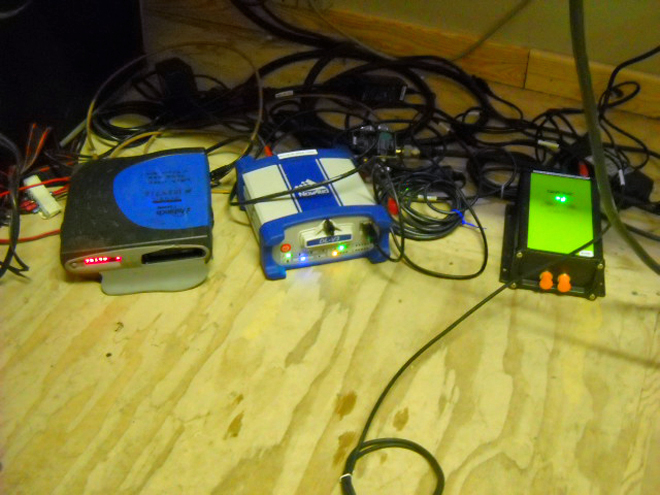From: Colleen McIntosh, data analyst/programmer, Sigma Space/NASA’s Goddard Space Flight Center
 Staying on the ground as part of the GPS base station crew, there isn’t a whole lot to do as far as maintaining the receivers. The Land, Vegetation, and Ice Sensor (LVIS) team has three receivers, all different. We have a Javad which records data at 20 hertz, a Novatel which records data at 10 hertz and an Ashtech which records data at 2 hertz. These receivers are running all day every day.
Staying on the ground as part of the GPS base station crew, there isn’t a whole lot to do as far as maintaining the receivers. The Land, Vegetation, and Ice Sensor (LVIS) team has three receivers, all different. We have a Javad which records data at 20 hertz, a Novatel which records data at 10 hertz and an Ashtech which records data at 2 hertz. These receivers are running all day every day.
Running receivers at different frequencies is somewhat of an experiment. The higher the frequency the more data points you get and, theoretically, the better the results. We are just testing that theory to figure out the best rate for LVIS.
I check on the receivers twice a day: once in the morning before the flight takes off, and then again an hour after the plane lands. The most important data, of course, is taken while the plane is in flight. The remaining data is used to get the most accurate position of our base station possible. Inside the collected data file are coordinates, which should be the same from day to day, but nothing is perfect, so they are slightly different. We take an average of the coordinates, and I use those values when processing the data.
It may seem that I only do something before and after the flight, but while the plane is in flight I process the data collected from previous days. The internet is rather slow up here, so sometimes processing can take some time.

